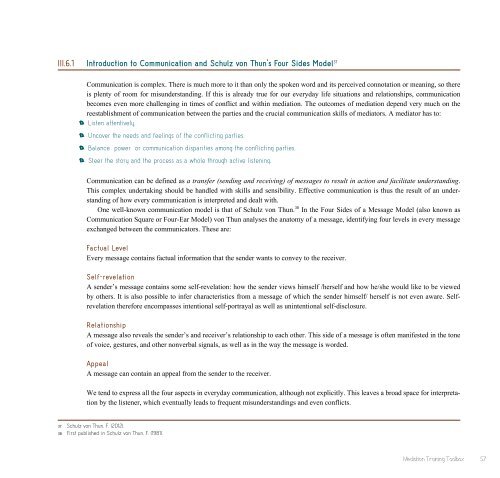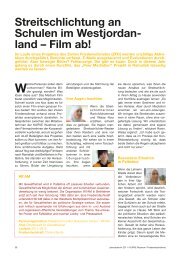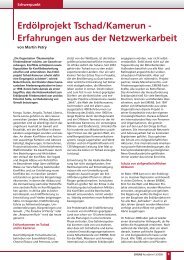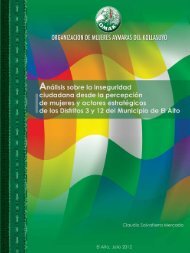Merging Ethiopian Wise-Counsel Mediation and Facilitative ...
Merging Ethiopian Wise-Counsel Mediation and Facilitative ...
Merging Ethiopian Wise-Counsel Mediation and Facilitative ...
- No tags were found...
You also want an ePaper? Increase the reach of your titles
YUMPU automatically turns print PDFs into web optimized ePapers that Google loves.
III.6.1 Introduction to Communication <strong>and</strong> Schulz von Thun's Four Sides Model 37Communication is complex. There is much more to it than only the spoken word <strong>and</strong> its perceived connotation or meaning, so thereis plenty of room for misunderst<strong>and</strong>ing. If this is already true for our everyday life situations <strong>and</strong> relationships, communicationbecomes even more challenging in times of conflict <strong>and</strong> within mediation. The outcomes of mediation depend very much on thereestablishment of communication between the parties <strong>and</strong> the crucial communication skills of mediators. A mediator has to:> > Listen attentively.> > Uncover the needs <strong>and</strong> feelings of the conflicting parties.> > Balance “power” or communication disparities among the conflicting parties.> > Steer the story <strong>and</strong> the process as a whole through active listening.Communication can be defined as a transfer (sending <strong>and</strong> receiving) of messages to result in action <strong>and</strong> facilitate underst<strong>and</strong>ing.This complex undertaking should be h<strong>and</strong>led with skills <strong>and</strong> sensibility. Effective communication is thus the result of an underst<strong>and</strong>ingof how every communication is interpreted <strong>and</strong> dealt with.One well-known communication model is that of Schulz von Thun. 38 In the Four Sides of a Message Model (also known asCommunication Square or Four-Ear Model) von Thun analyses the anatomy of a message, identifying four levels in every messageexchanged between the communicators. These are:Factual LevelEvery message contains factual information that the sender wants to convey to the receiver.Self-revelationA sender’s message contains some self-revelation: how the sender views himself /herself <strong>and</strong> how he/she would like to be viewedby others. It is also possible to infer characteristics from a message of which the sender himself/ herself is not even aware. Selfrevelationtherefore encompasses intentional self-portrayal as well as unintentional self-disclosure.RelationshipA message also reveals the sender’s <strong>and</strong> receiver’s relationship to each other. This side of a message is often manifested in the toneof voice, gestures, <strong>and</strong> other nonverbal signals, as well as in the way the message is worded.AppealA message can contain an appeal from the sender to the receiver.We tend to express all the four aspects in everyday communication, although not explicitly. This leaves a broad space for interpretationby the listener, which eventually leads to frequent misunderst<strong>and</strong>ings <strong>and</strong> even conflicts.37 Schulz von Thun, F. (2012).38 First published in Schulz von Thun, F. (1981).<strong>Mediation</strong> Training Toolbox57
















